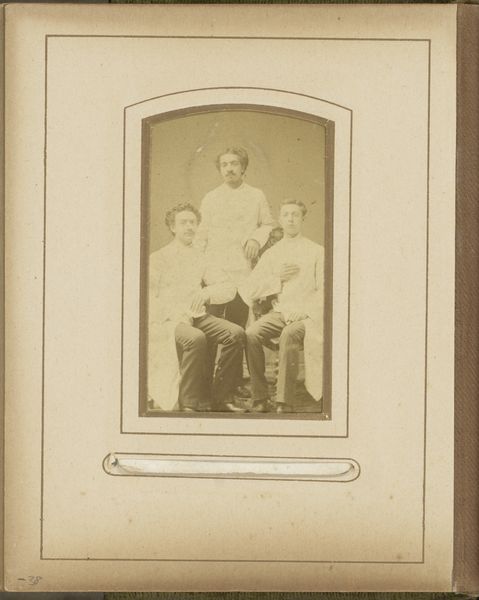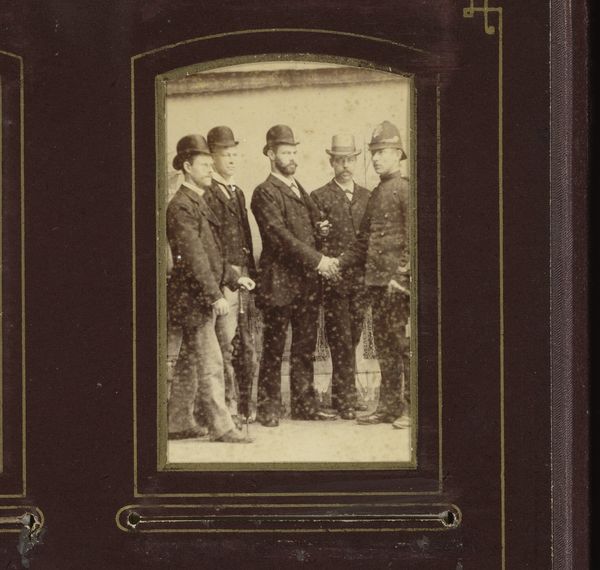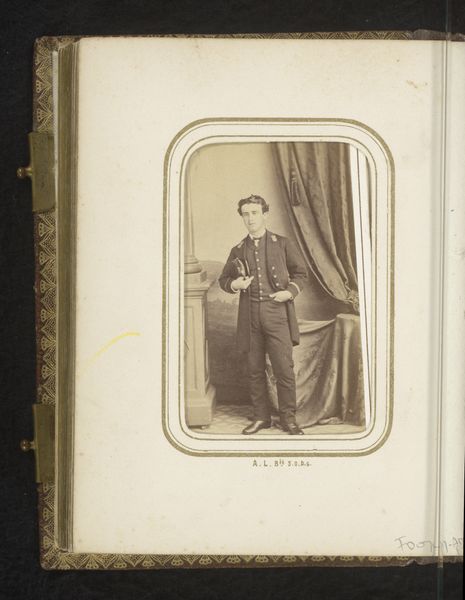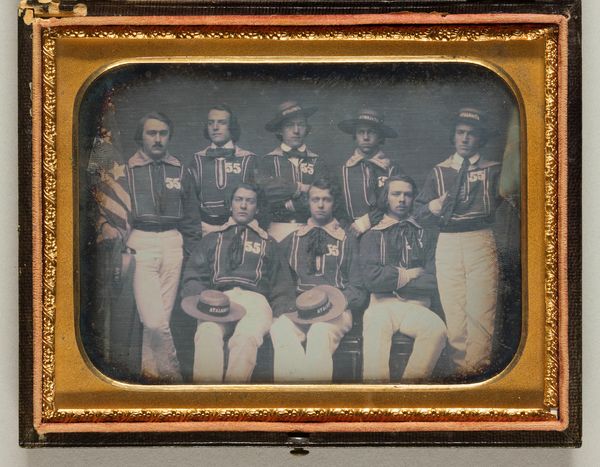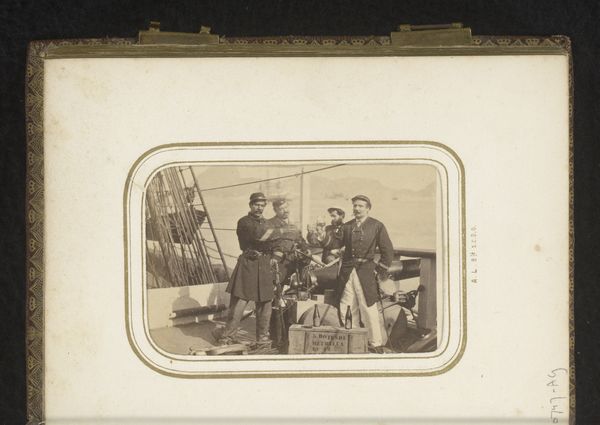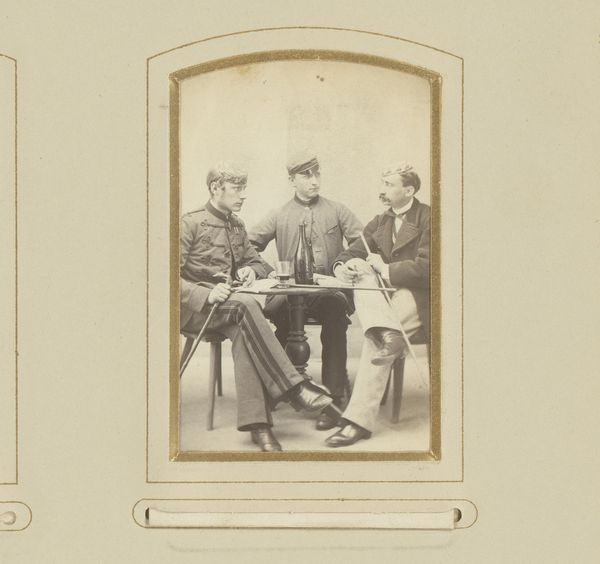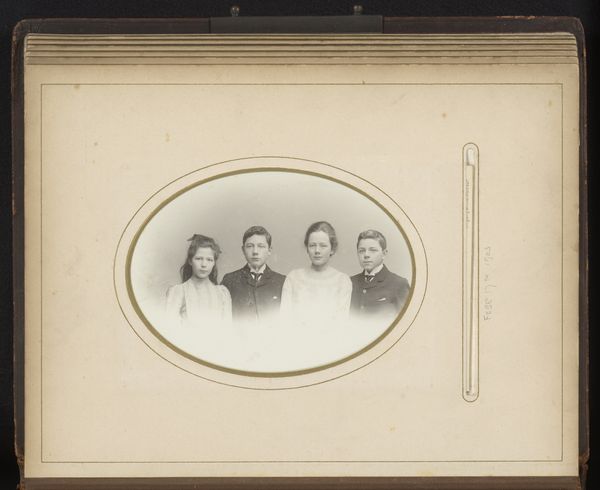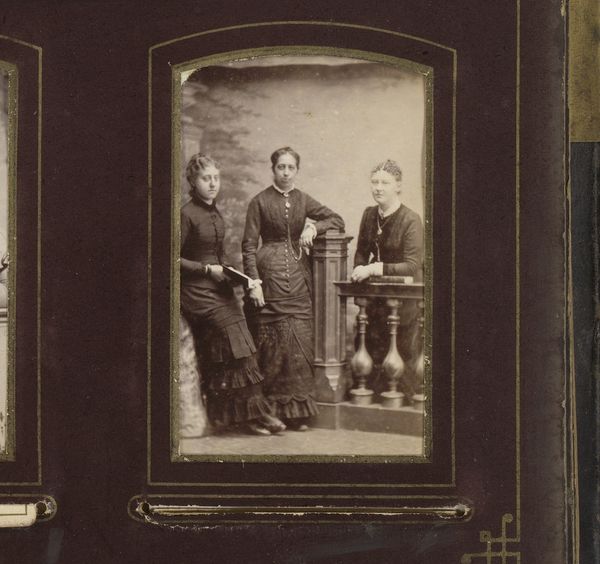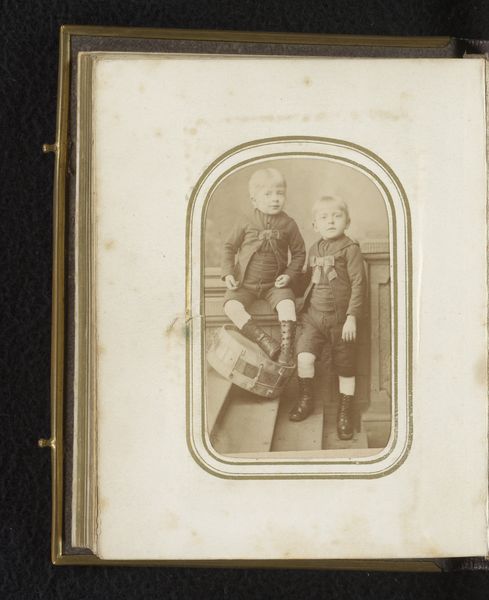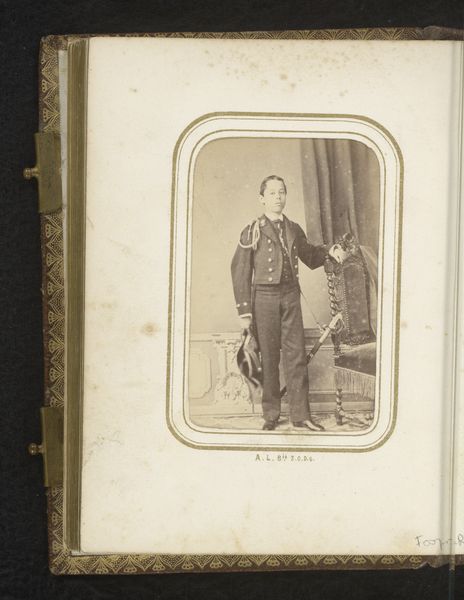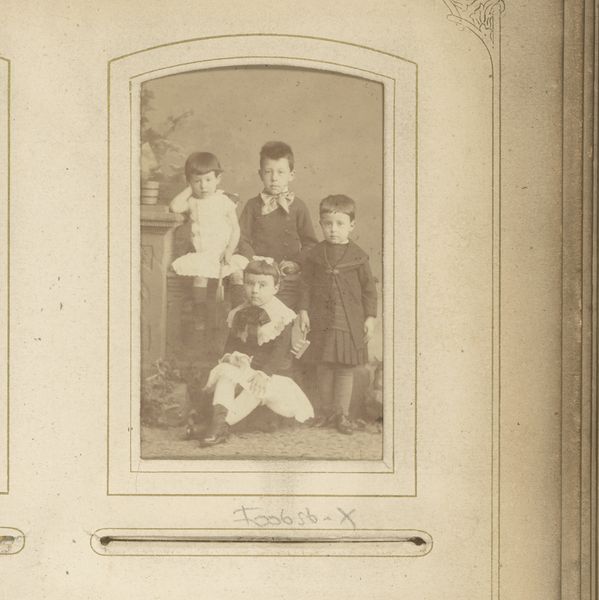
photography
#
portrait
#
photography
#
group-portraits
#
genre-painting
#
realism
Dimensions: height 106 mm, width 63 mm
Copyright: Rijks Museum: Open Domain
Curator: This photograph, taken between 1860 and 1890, presents a group portrait of uniformed crew members on a ship. The sepia tones and formal composition evoke a sense of historical gravity. Editor: It strikes me as a rather staged encounter, even for a posed photograph from this period. There’s a formality that hints at the strict hierarchy and social dynamics onboard, wouldn't you agree? Who had the power to say “let’s document this crew now,” and for what purpose? Curator: Precisely. The material constraints of early photography—the long exposure times, the limited tonal range—influenced the image’s construction. They probably worked together very efficiently in order to hold still, yet we have very little documentation regarding that. But who produced this? And for whom? Editor: Good questions! Seeing the crew's various ethnicities together makes me consider the era's colonialism and the role these sailors may have played in its global expansion, either voluntary or not. There must be hidden personal stories here within this single piece. Curator: That’s a critical point. Examining this photograph also demands we confront the exploitative labour practices in maritime industries during this period. What were the sailors’ working conditions, pay, and social standing beyond this singular snapshot? These aspects affect our view of the artwork greatly. Editor: Yes. We are forced to think about identity and representation as well. I'm also drawn to their clothes. The uniformity of dress obscures individual narratives in favor of the image of a collective unit doing the important, difficult and extremely tiring labour of maritime service. It almost certainly demanded all their time, sweat and tears! Curator: Agreed. These uniforms speak volumes. They are not simply clothing; they signify naval power, labour roles, and, essentially, belonging to a very strictly organized unit of people that worked and rested together. It tells a rich history of making through fabrics, mass production, and the complex network required for outfit distribution. Editor: So while seemingly a straightforward genre scene of maritime life, it opens dialogues about colonial pasts and the production chains that the industry fed upon. I wonder about the families they may have left, and whether the ships docked or not after long periods! Curator: Indeed. Considering it from this perspective, we begin to unravel complex layers of this seemingly simple image! Editor: It provides great opportunities for intersectional conversations about identity, material history, and production. It encourages us to interrogate narratives told about work, and what remains unspoken.
Comments
No comments
Be the first to comment and join the conversation on the ultimate creative platform.

